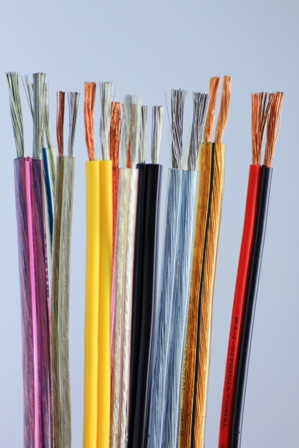Universal Serial Bus (USB) 2.0 is
an external interface used on computers and other digital devices to transfer
data through a cable. The designation “2.0” refers to the standard or version
of the interface and it was released in 2000. While USB 3.0 was made standard
in 2008, it is backward compatible with older versions. The primary difference
between each version has been a major increase in transfer rates, with USB 2.0
improving upon the original release and 3.0 being even faster.
Major Features
USB is a plug-and-play interface, which means that a computer does
not need to be powered off in order to plug in or unplug a component. For
example, a media player can be connected to a computer
via a USB while the machine is still in use, making these devices "hot
swappable." The computer registers the device as another storage area and
shows any files it contains. Other types of ports often require that someone
shut down a computer before making such a connection, which led to much of the
format's popularity.
The maximum approved length
for a USB 2.0 cable is about 16 feet (5 meters). This limitation is based on
how quickly a signal travels through the cable. If it takes too long, then the
connected devices indicate that it was lost, and anything over about 16 feet (5
meters) exceeds this time.
Upgrade From 1.0
When USB standards change from an
existing version to a newer version, as they did from 1.1 to USB 2.0, the major
improvement is often the speed at which data transfers between connected
devices. In 1.0 and 1.1, there were two speeds available: "low speed"
with a rate of 1.5 megabits per second (Mbit/s) and "full speed" at
12 Mbit/s. USB 2.0 improved upon these with "hi-speed" transfer rates
of 480 Mbit/s. Since this standard is typically backward compatible, the 2.0
version includes the older "full speed" and "low speed"
rates to function with 1.0 devices.
Even in USB 2.0, "low
speed" was often used for data transfers between a computer and a mouse or
keyboard, except for high-end gaming devices. Memory sticks and external hard
drives became much more powerful with the 2.0 standards, since they often ran
into "bottlenecks" with older transfer rates. A bottleneck is a point
at which data is slowed down by limitations in transfer rate, such as the
slower speeds of 1.0 ports, even though the devices themselves can send and
receive data much faster.
Common Devices
Aside from media players, many other external devices use these
data ports, including digital cameras, mobile phones, and newer cable boxes.
Native components also make use of this interface, such as mice, keyboards, and
external hard drives, as well as printers and networking hardware. One of the
most popular and convenient USB 2.0 gadgets is a memory stick, which can store data for easy
transfer between machines.
Introduction of 3.0
In 2008, USB 3.0 was officially adopted as the new standard for
this format. It introduced new connections that included more pins, allowing
for "SuperSpeed" data transfer rates of up to 5 gigabits per second
(Gbit/s). The 3.0 standard maintained backward compatibility, including "hi-speed"
and "full speed" rates to function with older USB 2.0 devices.







